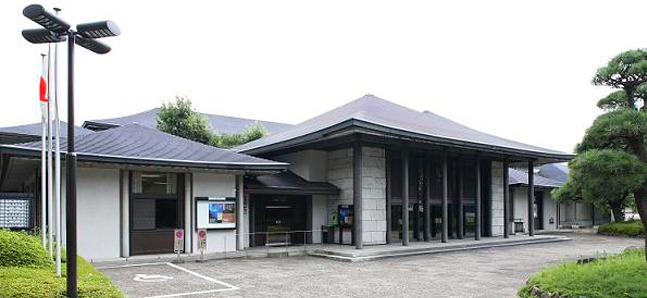
Posted: Wed May 12 2010
Though some people say that Japan’s traditional arts are slowly fading into the background, ask the younger generation and they may disagree. Go to a Noh performance and you might also notice something else: a large number of non-Japanese in the audience, many of whom are visiting from overseas, ready to breathe new interest into this centuries-old art form.
Noh theatre may appear to be an intimidating prospect, born of complex cultural traditions that seem elusive. If you’re not Japanese, it may be an equally tricky question as to whether or not you’re getting the full effect of the performance, or that you might be engaged with it in an entirely different way than intended. That’s not the case as we found out, however – Noh need not be as tall an order as you might think.
To get a feel for Noh, especially if you’ve never really had anything to do with it before, you need to know the basics: Noh is a Japanese performing art which uses forms of chanting (utai) and dance. It was developed almost completely during the 14th century, and has been recognised by UNESCO as an Intangible Cultural Heritage.
In some ways, it resembles the commedia dell’arte, the Italian form of theatre where players wear masks, and was the precursor to opera. Noh and commedia dell’arte are pseudo-contemporaries; commedia began in the mid-15th century, so the masked theatres in Italy and Japan were born within around 100 years of each other.
Since Noh’s inception, the popular vision of the art has involved roles that use the fabled masks – Noh is often thought of as being an expressionless mode of theatre. Yet, Noh’s articulation of expression is actually rich and multifaceted.
Kanze School Noh actor Shingo Katayama explained to us, ‘A performer’s ability is, of course, a large factor with the Noh mask, but the masks themselves are ingeniously crafted. They are made so that they are not symmetrical. Just like the human face, if you change things like the angle of the left and right eyes or the area of the cheeks, you create the positive and negative elements of the face. The masks are made so that all of the expressions in between – the entire range of human emotions – can be reflected. In the phrase “as expressionless as a Noh mask”, the masks are used as a synonym for a lack of expression, but the masks actually have a whole range of expressions.’ Noh masks openly express the emotions of living people, and it’s possible to feel that they are actually getting angry or even shedding tears.
Noh received the patronage of Muromachi Period shogun Ashikaga Yoshimitsu, and in turn it came to be practiced and appreciated by the privileged samurai class. That is why even today, in comparison with performing arts like kabuki and bunraku (Japanese puppet theatre), which have a strong association with chonin (merchant class) culture, Noh is seen as inaccessible to the average person – yet Noh was originally an art of the common people. Katayama explains, ‘The people of those times probably didn’t really see things with their minds; they knew how to understand things through actual experience.’
The fact that Noh also deals with basic, universal themes that concern the human race – life, death, nature – is another of its appeals. Many of these elements are by nature abstract, so each viewer will interpret it in their own way– based on the paradigm of their different cultural backgrounds.
Time Out Tokyo spoke to Anna Camero, a Mexican doctor sightseeing in Japan; Noh was one of the top items on her list. Anna had arrived at Narita Airport that morning and opened her guide book, looking for more information on the National Noh Theatre; because she had been previously interested in Noh, she left her luggage at her hotel and headed over there.
Camero said, ‘I liked “Funa Benkei”, where a clan who have perished at sea reappear as vengeful spirits. I thought it was very spiritual, but that spirituality was completely different from that of Mexico or Western cultures. It wasn’t religious. It was sophisticated, and I felt it had a very artistic spirit – you could say it was poetic. I thought that it was very Japanese. I could really understand how the sea is a very important thing for Japanese people, and the kind of sensitivities people have towards things like nature and death. It was a wonderful experience. It was a really cleansing, good experience.’
Much like Anna did, if you just turn up and are lucky enough to do so on day when a performance is taking place, it’s possible to buy a ticket on the spot. Even if there isn’t a show that day, if you have the time you can pick up a ticket for a weekend performance.
Starting from Friday, May 14 at 1pm, there will be a weekend-long set of Noh performances at the National Noh Theatre, so don’t miss your chance to get in on the secret expressions of Noh.
Regular Performance
Kyogen: ‘Taishi no Teboko’ ('The Crown Prince's Halberd')
Perforned by: Manzo Nomura (Izumi school)
Noh: ‘Uneme’ ('The Lady-in-Waiting')
Perforned by: Junnosuke Watanabe (Hosho school)
Date: Fri May 14
Time: 1pm start
Location: National Noh Theatre (Full details & map)
Tags:
Tweets
- About Us |
- Work for Time Out |
- Send us info |
- Advertising |
- Mobile edition |
- Terms & Conditions |
- Privacy policy |
- Contact Us
Copyright © 2014 Time Out Tokyo














Add your comment